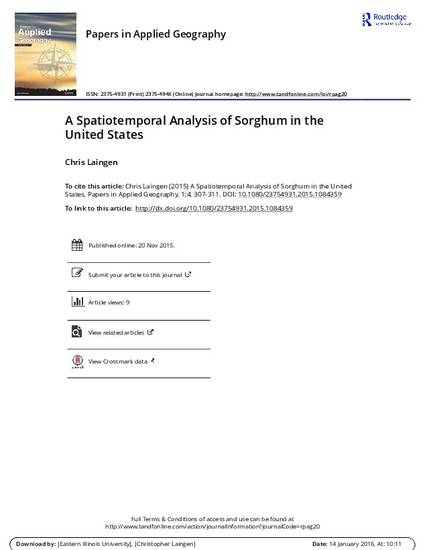
Article
A Spatio-Temporal Analysis of Sorghum in the United States
Papers in Applied Geography
(2015)
Abstract
Sorghum is a type of grain, forage, and sugar crop that has been grown in warm, arid climates around the world for 10,000 years. It is a drought-tolerant crop, and is among the most efficient crops in the conversion of solar energy and use of water. In the United States, South America, and Australia, sorghum grain is used primarily for livestock feed and ethanol production and is becoming popular in the human food sector because of its use in gluten-free food products. The U.S. sorghum belt stretches from South Dakota to southern Texas. From the mid-1950s to the mid-1980s, sorghum was harvested, on average, from more than 14 million acres of cropland. Today, the United States harvests just over 7 million acres, with most of those acres in Kansas (2.7 million) and Texas (2.25 million). This article provides a spatiotemporal analysis of sorghum grown in the United States over the past century to help understand farmers' decision making in response to changing markets, policy, and environmental variables.
Keywords
- agriculture,
- sorghum,
- united states
Disciplines
Publication Date
2015
DOI
http://dx.doi.org/10.1080/23754931.2015.1084359
Citation Information
Chris Laingen. "A Spatio-Temporal Analysis of Sorghum in the United States" Papers in Applied Geography Vol. 1 Iss. 4 (2015) p. 307 - 311 ISSN: 2375-4931 Available at: http://works.bepress.com/chris_laingen/9/
